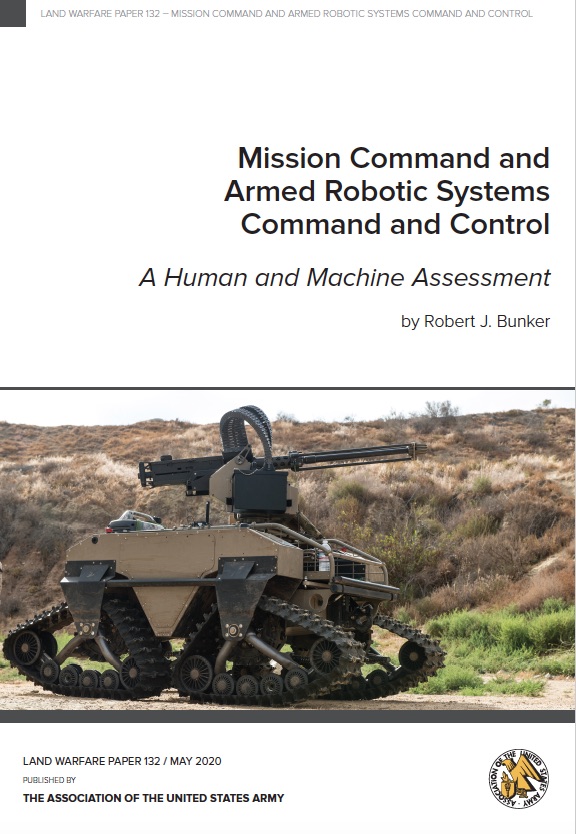Mission Command and Armed Robotic Systems Command and Control: A Human and Machine Assessment
Dr. Robert J. Bunker, Senior Fellow, Small Wars Journal-El Centro has a new Land Warfare Paper at the Association of the United States Army. The paper, "Mission Command and Armed Robotic Systems Command and Control: A Human and Machine Assessment" looks at 'Mission Command' in the context of emerging armed robotic systems (artificial intelligence driven autonomous and semiautonomous weapons systems) in war. — SWJ Editors

Mission Command and Armed Robotic Systems Command and Control: A Human
and Machine Assessment
Robert J. Bunker
AUSA ILW Paper 132
29 May 2020
For almost 20 years, mission command has been a key component of command and control (C2) in the U.S. Army. However, with the advancements in the realm of artificial intelligence and the resultant utilization of autonomous and semiautonomous weapon systems in warfare, it is necessary to examine the extent to which these machines can cooperate within this construct.
Mission command, properly understood, empowers subordinate decisionmaking and decentralized execution appropriate to any given situation. It is solely meant for human-to-human C2. Like war itself, it is an inherently “human endeavor . . . not a mechanical process that can be precisely controlled by machines [or] calculations.” Systems that use machine algorithms for their decisionmaking processes are in direct variance to the emotive- and moral-seeking components of
human cognition. Humans experience love, fear, camaraderie and hate—machines do not. Nor do they understand honor, integrity or self-sacrifice. Faced with this conflict, how can the deployment of machines work in concert with the Army’s C2?
Available at: https://www.ausa.org/publicati
